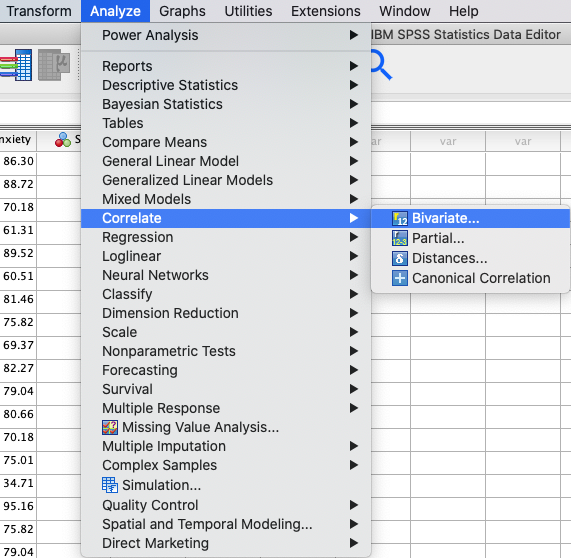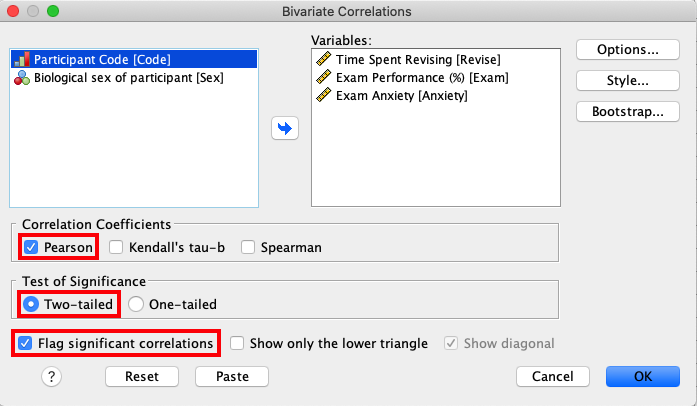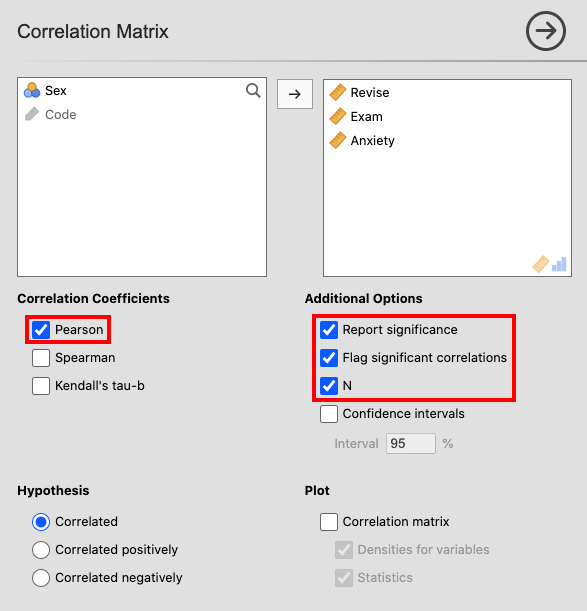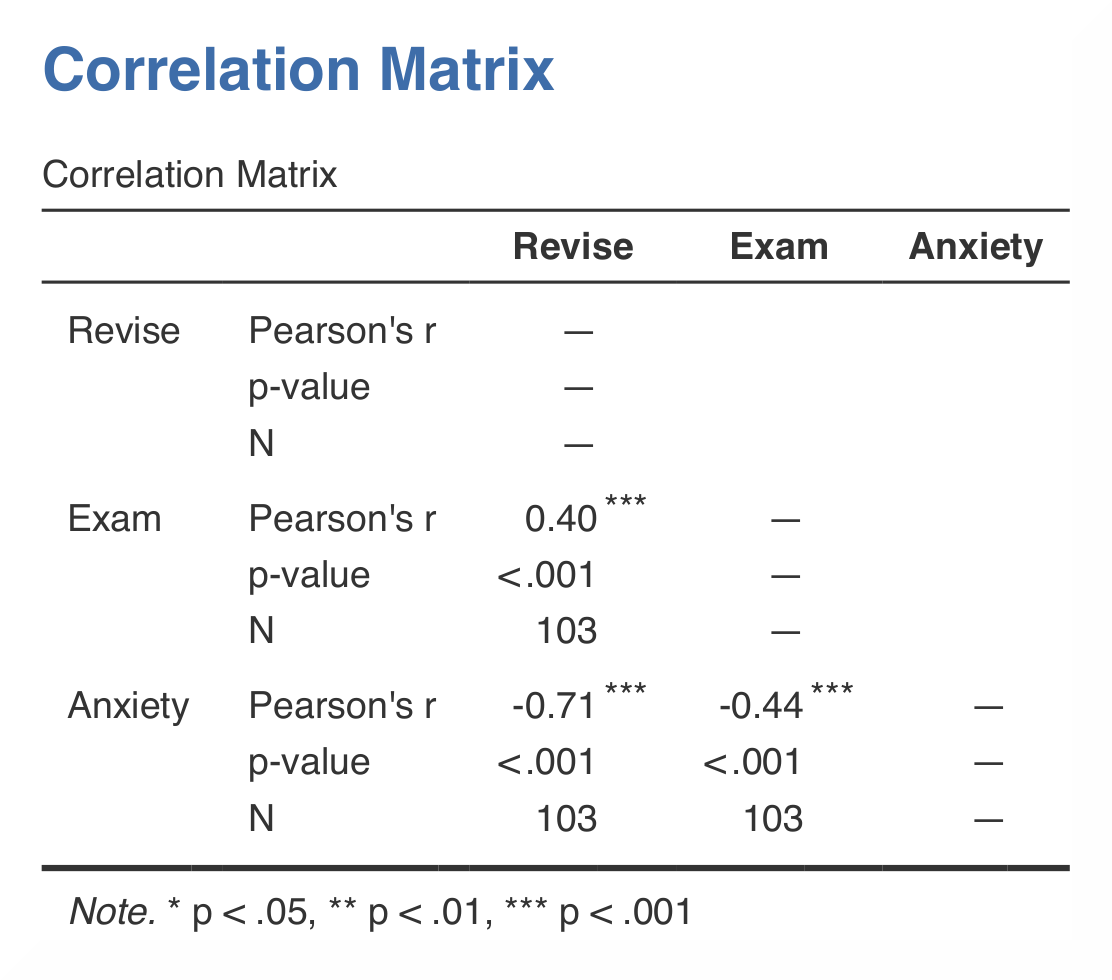节作者:Rebecca Vederhus, Sebastian Jentschke
From SPSS to jamovi: Correlation¶
This comparison shows how a Pearson’s correlation is conducted in SPSS and jamovi. The SPSS test follows the description in chapter 8.4.1-8.4.2 in Field (2017), especially figure 8.7-8.8 and output 8.1. It uses the data set Exam Anxiety.sav which can be downloaded from the web page accompanying the book.
| SPSS | jamovi |
|---|---|
In SPSS you can run a correlation using: Analyze → Correlate →
Bivariate. |
In jamovi you do this using: Analyses → Regression → Correlation
Matrix. |
 |
 |
In SPSS, move the variables Revise, Exam and Anxiety to the
variable box Variables. In addition, make sure the box called Pearson
under Correlation Coefficients is ticked. |
In jamovi, move the variables Revise, Exam and Anxiety into the
box on the right. Check Pearson under Correlation Coefficients and
Report significance, Flag significant correlations and N under
Additional Options. |
 |
 |
| The results are essentially the same in SPSS and in jamovi. | |
 |
 |
| In SPSS, you can tell if a correlation is significant by noting the amount of asterisks after the correlation coefficient. The correlation matrix shows the correlation coefficient, the p-value, and the sample size (N). | jamovi, in accordance with APA-style, flags significant correlations using one (p < .05), two (p < .01) or three (p < .001) asterisks. In contrast, in SPSS all correlations above p < .01 level are simply marked using two instead of three asterisks. |
| In SPSS, Pearson’s r is found both underneath and over the diagonal, while in jamovi the coefficient is only shown underneath. This makes it much easier to find relevant information from the output in jamovi. The numerical values for the statistics are identical: r = 0.40, p < .001; r = -0.71, p < .001; r = -0.44, p < .001. | |
| If you wish to replicate those analyses using syntax, you can use the commands below (in jamovi, just copy to code below to Rj). Alternatively, you can download the SPSS output files and the jamovi files with the analyses from below the syntax. | |
CORRELATIONS
/VARIABLES=Revise Exam Anxiety
/PRINT=TWOTAIL NOSIG FULL
/MISSING=PAIRWISE.
|
jmv::corrMatrix(
data = data,
vars = vars(Revise, Exam, Anxiety),
flag = TRUE,
n = TRUE,
plotDens = TRUE,
plotStats = TRUE)
|
| SPSS output file containing the analyses | jamovi file containing the analyses |
References
Field, A. (2017). Discovering statistics using IBM SPSS statistics (5th ed.). SAGE Publications. https://edge.sagepub.com/field5e